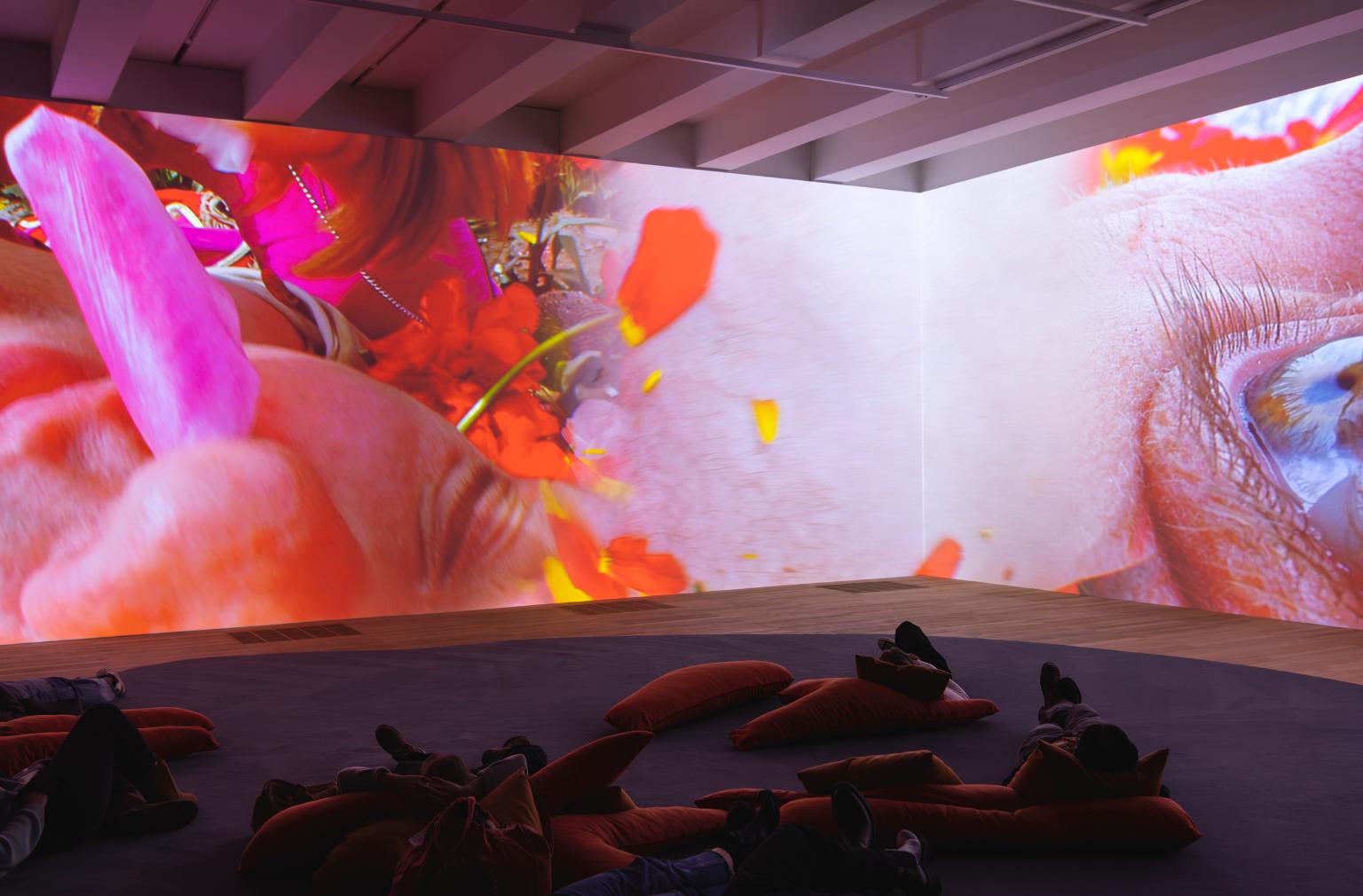Akram Zaatari explores how the internet fulfils the desire to perform for strangers
Dance to the End of Love is a dance piece based on YouTube clips from countries across West Asia and North Africa, including Egypt, Yemen, Libya, Saudi Arabia, United Arab Emirates and Oman. Zaatari chose material from 2005–10 of mostly young men performing activities that range from singing, dancing and playing music. They recreate scenes from sci-fi films or do stunts: special effects fireballs are hurled across the screen and jeeps are driven out into the desert in precarious positions.
Most of the performers filmed themselves with mobile phones and uploaded the low-res footage onto YouTube where millions of people around the globe could now see them. Zaatari said: ‘The web enables us to hear all those voices, all those desires screaming out from remote rural places, from villages and cities, wanting to be admired, loved, wanting to be heard and seen.’
The clips show how attitudes around masculine identities quickly spread and adapt to different settings and contexts. Cyberspace creates an audience and turns their performances into popular trends to repeat or re-enact. Zaatari completed this work at the beginning of a period of anti-government protests and uprisings, referred to as the ‘Arab Spring’ by western commentators. YouTube and other self-broadcast platforms played an important role in the political climate at that time.
During the Covid-19 pandemic, many of us have lived through moments of forced solitude, relying on the virtual world for connection. Zaatari’s work reveals a human desire to impress strangers. Reflecting on the resonance of this work today, the artist invites us to ask ourselves about that one thing we’d do when offered the opportunity to perform for the world.
Art in this room


